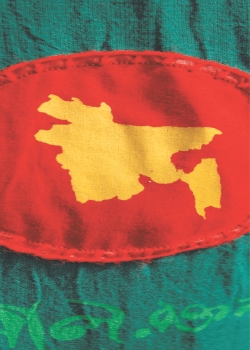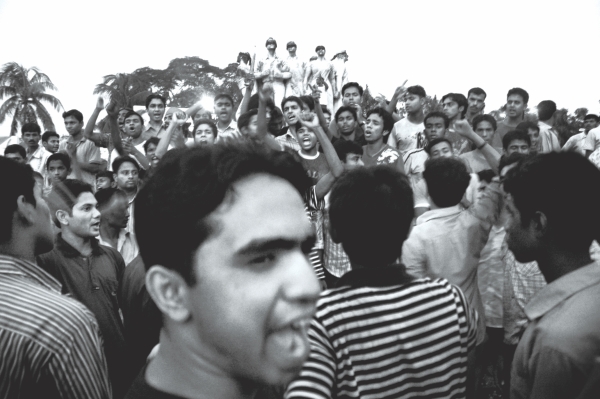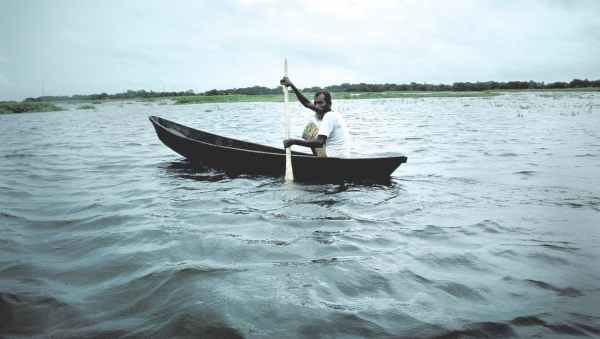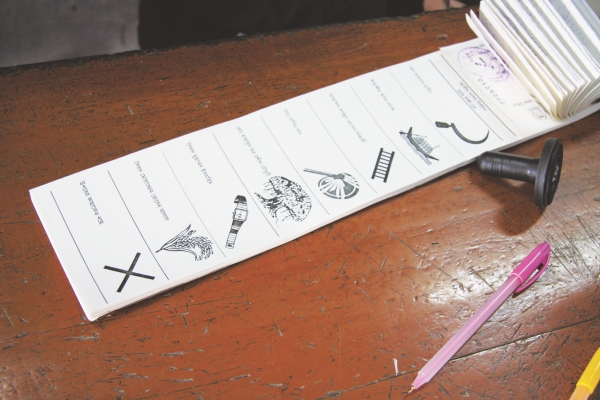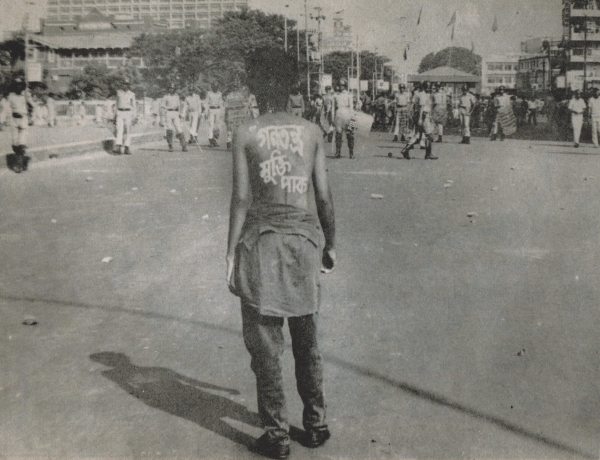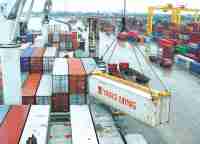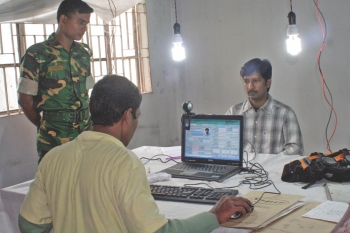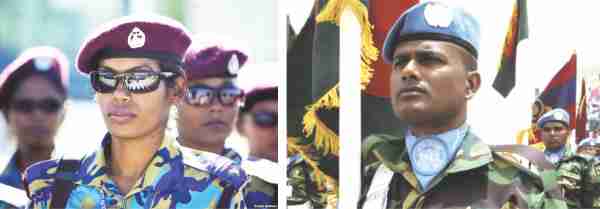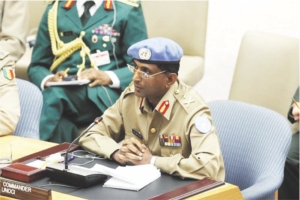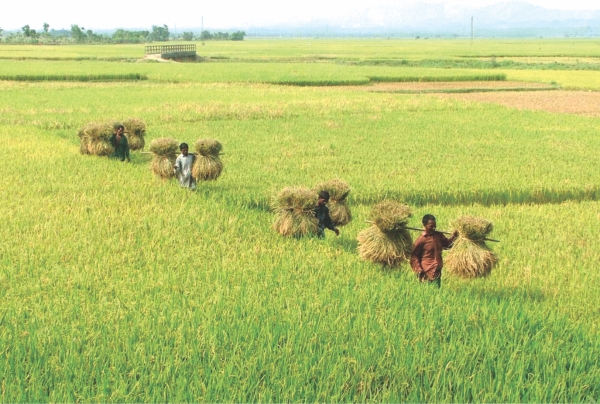| Home - Back Issues - The Team - Contact Us |
 |
| Volume 10 |Issue 47 | December 16, 2011 | |
|
|
Cover Story 1
Bangladesh at 40 has gone through a roller coaster ride with more dips than rises, many will say. Over the last four decades, we have gone through many upheavals -political assassinations, famines, floods and cyclones, military dictatorships and the curse of corruption that plague us even today. Yet, despite all the odds against us, the economic hardship and political instability, as a nation we Bangladeshis have managed to stand proud. If it is our stoical nature and unending resilience that has helped us pull through, it is our determination to survive as an independent nation that has given us the impetus to strive on forward. The Star gives its readers 40 achievements of this nation to celebrate its fortieth year of freedom. TAMANNA KHAN, ANIKA HOSSAIN,
............................................................................................................................................................ Resilience The Indomitable Spirit AHMEDE HUSSAIN
Bangladesh is a land of possibilities. Because of its curious geographical location, it is also known for a string of natural disasters that have ripped the heart of the nation apart. Its strength, however, has remained its people, who, burnt by fire, devastated by cyclones and submerged by floods, have never failed to pick through the remains of their broken, charred and shattered lives to proudly look into the dark and dangerous future that ominously awaits them at the bend of history. This is the story of a people, who never shy away to bear their heart before military dictators' bullets, who never think twice to defy curfews to bring out processions that will usher in a new dawn in their collective history; events that will morph and reshape their nascent nation's future politics. They are the toiling masses of the country, who, thin and bare-backed, produce some of the finest crops in the world. They are Bangladesh. This is a tribute to their indomitable spirit, to their mighty strength to turn round immediately after a disaster. In the seventies, beside the Vietnamese people's war for freedom, Bangladesh's liberation war was the biggest event in world history. Both the US and China were actively involved in helping the marauding Pakistani army with arms and other military logistics. Bangladesh stood at the left-hand side of the political spectrum--the Soviet Union, India and countries belonging to the former Warsaw Pact helped the Freedom Fighters diplomatically and with military supplies. That sounds like a world war, and rightly so--at the fag end of Bangladesh's own Great War, the US had sent its Seventh Fleet, armed and all, to stop the impending defeat of the Pakistanis who were killing and raping innocent civilians. The Soviets, for their turn, quickly dispatched two submarines loaded with nuclear weapons from their bases at Vladivostok to the Bay of Bengal. The war never turned nuclear, but it was a big slap in the face for then US government. Immediately after independence, when ordinary Bangladeshis were still trying to gather enough courage to rebuild their war-torn future, a famine broke out in the early seventies, thanks to misg overnance and the US's refusal to send food aid under PL 480. Thousands died, and before the then government led by Bangabandhu Sheikh Mujibur Rahman could grapple with the situation, he, along with almost all the members of his family, was brutally murdered. The country fell into a dark abyss, where coups and counter-coups brought out would-be military dictators of different shades of colour, guns in hand, vying for power. Throughout the eighties, the people of Bangladesh fought gloriously against military dictatorships and braved bullets that were bought with their own hard-earned money but used against them by their own army.
The eighties had also seen some devastating floods and cyclones. Thousands died and the people of Bangladesh, unvanquishable that they are, valiantly fought some of the biggest disasters in their nation's history. They made packets of oral saline and dried food to send to those who needed them the most. The dictator of the day graced the prime slot of the state-run television, wading through knee-deep water in boots to garner support for his vile and despotic rule. People, at that time, didn't pull him down and throw him into the dustbin of history, where he really belonged. When they finally did protest, pouring out into the streets like swarms of angry bees whose nests have been unnecessarily disturbed, the dictator stepped down and democracy was restored. Immediately after democracy was established, the country and its fledgling economy faced one of its biggest blows--the cyclone of April 29, 1991 killed 135,000, mostly in the south-eastern part of the country, and the Chittagong port, the life line for Bangladesh's economy, among many other key establishments, was destroyed. Slowly but surely people got back on their feet and rebuilt an economy that has withstood the current global economic meltdown and is now considered among the most important 11 growth-generating economies by the Citigroup. Untamed industrialisation has also given birth to a flurry of man-made disasters. Paddy fields have been turned into housing estates and rivers were encroached and filled with sand to turn them into brick kilns. An attempt was made a few years ago to start open-pit mining in Phulbari, Dinajpur, which, many experts believed, would have brought an environmental catastrophe to the densely populated area. People resisted, faced bullets and laid down their lives to save their livelihood and secure the future of their children. The plan has been shelved. The people of this country have remained its biggest asset. They are the sentinels of progress and the vanguard of a revolution that will free the nation from the shackles of poverty and every other form of exploitation. Salute to the brave souls of Bengal who would rather lay down their lives than stop fighting for their right to live freely! Democracy
A Relentless Pursuit Twenty years after its independence, the people of Bangladesh attained another major victory in 1991: the establishment of democracy. Like all positive changes in history, it didn't come as a gift, nor was it brought about by people with power and privilege. Rather, it was the outcome of a prolonged struggle, in which countless unknown people—workers, labourers, students, farmers, academics, doctors, lawyers, journalists and artistes fought to end the longest dictatorship in the history of Bangladesh, the Ershad regime. People who protested Ershad's autocracy, both men and women, lost their lives, served years in prison and got maimed by state sponsored terrorists and law enforcers, but they relentlessly pursued their dreams. The period of Ershad's rule was characterised by widespread corruption, nepotism, repression and militarisation of the administration. The 80s was also a period of economic liberalisation and the beginning of an era of financial deregulation and privatisation on an unprecedented scale. With the implementation of neo-liberal policies, state-owned industries were privatised or closed down at a fast pace while other productive sectors faced subsidy cuts that rendered hundreds of thousands unemployed across the country. An obvious outcome to all these was growing unrest. During the late 80s, popular resistance movements were repeatedly organised and were met with batons, bullets and political conspiracies. But the dictator finally gave way to the resistance in 1990. However, Ershad was not the first dictator in the history of Bangladesh. His devastating economic policies and the repressive nature of his administration were a continuation, or more correctly, an extension of the former despotic regimes. In 1975, through the fourth amendment to the constitution, the Awami League government designed and implemented a one-party rule under Bangladesh Krishak Sramik Awami League (BAKSAL) and banned all oppositional political parties. Then, probably due to the fear of becoming politically irrelevant, the “progressive” and “left” parties, such as the Communist Party of Bangladesh and the National Awami Party also joined and merged into BAKSAL. However, later that year, a group of army officers overthrew the government and seized power in a bloody coup. Thus began a dark chapter in the history of Bangladesh, signified by military might, bloody assassinations and violations of elementary human rights.
After a few years of coups and political assassinations, the then Army Chief Ziaur Rahman declared himself the president and began another regime which was characterised by legitimisation of religious politics and the abandonment of the secular and socialist ideals of the state. His erroneous state policies were cloaked under the rhetorical flourishes about "Bangladeshi nationalism". Again, some “progressive” and “left” parties were wise enough to support the military ruler. After the assassination of Ziaur Rahman in 1981, Lieutenant General HM Ershad became the president of Bangladesh in 1983. Coming back to the revolution that ousted Ershad, the people who sacrificed or risked their lives had high hopes and aspirations about a democratic state. Indeed, the parliamentary democracy that has been established in Bangladesh since 1991 has more or less ensured parliamentary election every five years, people's right to vote, individual freedom of choice and freedom of speech. But there is more to the concept of democracy than these rights, which are the elementary conditions of a functioning democracy. These rights only become meaningful when people have a say in the economic and political system of the country. To this day, an overwhelming majority of the population have no control over the political and economic policies of the country. In other words, the decisions that enormously affect the lives of common people are still made by the select few. In the political system, the general public is a tool for the leaders to ascend to the parliament. Tremendous disparity in wealth and power still characterise our society. Needless to say, the class divide has only deepened over the decades as the top one per cent of the population accumulated more wealth and control over resources. Although there has been euphoria of privatisation of public utilities over the last three decades, the state, generally speaking, has sunk deeper into bureaucratic and military quagmire. High government offices are increasingly being populated by military personnel. Moreover, the recent trend in political parties across the spectrum is to give nominations to candidates contesting parliamentary and other elections or choose party leaders in exchange for money. On the whole, the avenues and institutions of the former despots have remained untouched—and, for that matter, unchanged—after the revolution of 90. Throughout our history, what is remarkable is the unbreakable spirit of common people. As made evident by the people's movement that put an end to military dictatorship for good, the people will never accept a subservient role again. It is the struggle of the common people that will give democracy the respect it deserves. Economy Slow and Steady
In terms of Gross Domestic Product (the sum total of all goods and services produced within a country during a given period), the economy of Bangladesh has made notable progress during the last two decades. While the annual average growth during the 1980s was less than 4 per cent, it exceeded 4 per cent in the early 1990s and crossed the 5 percent during the second half of that decade. Since 2004, annual rate of GDP growth has been mostly over 6 per cent. Logically, the growth of GDP has increased per capita income. However, due to the recent global financial meltdown, the growth of our economy has been reversed in 2008-09 and 2009-10. Nevertheless, it is understandable that the economy is capable of regaining and, in fact, increasing its growth rate in the future. In fact, the International Monetary Fund opined that Bangladesh's GDP growth will be 6.3 percent in the current fiscal year, driven by strong garment exports, rising remittance inflow and better electricity supply. During the early 70s, most of our economic activities comprised of agriculture. Since independence in 1971, the national food production has tripled. In recent years, the export of agricultural products like shrimps, smoked fish, jute etc has also contributed a lot to the foreign exchange reserves of the country.
Nevertheless, the market economic policies, adapted by governments, have gradually metamorphosed our economy into a market based, service sector oriented one. As a result, our major economic activities include the sales and distribution of imported commodities. The service sector oriented nature of our economy can be understood further if we look at the proliferation of private—and, for that matter, profit making—NGOs, consultancies, educational institutions, hospitals, financial and legal services, banking, real estate farms, luxury hotels, restaurants and so on. As an inevitable consequence, the country needs a lot of white collar workers and those engaged in clerical work who are not related to production, in any serious sense. However, the responsibility to develop and construct the country's basic infrastructure and public utilities like roads, water supply, electricity, education etc has been mostly retained by the government. But attempts to privatise them have been constant. Like many formerly colonised developing countries across the Asia and Pacific region, Bangladesh needs to make its economic growth more inclusive by eradicating poverty, and raising the quality of life for all citizens. We are one of the worst victims of climate change and economic stability is very vulnerable to global food and fuel price hikes. Despite all these, the increase in GDP per capita income in recent decades gives us grounds for optimism. But we must also consider the fact that the country's GDP is divided by the total number of people in order to determine GDP per capita. In other words, it is an average of the income of the multi millionaire entrepreneur and the person who lives below the poverty line. So, it is imperative to establish an economic system that allows a more equitable distribution of wealth and resources. National ID Card Clean and Clear
Bangladesh is perhaps one of the few nations in the world that has a clean and error-free voters list. The list's birth, like that of some other achievements, is mired in violence and mistrust. It is the then Bangladesh Nationalist Party-led government that put hundreds and thousands of fake voters in the list to win the national elections that was in the offing. The opposition parties demanded its cancellation, saying it would not otherwise participate in the elections. Violence broke out in the streets of the capital; and a civil war-like situation, along with the then caretaker government's (CTG) insistence on going on with the forged voters list made the army intervene–the 1/11 happened. The changeover is plagued with flaws: the new CTG put a lot of agendas on their plates, most of which it had miserably failed to carry out. But of them, one plan had seen great success. A national identity card has been given to all the adult citizens of the country, thanks to the Bangladesh Armed Forces' relentless efforts to make it happen in time. The new list, along with the National ID card, has given the country's fledgling democracy a new momentum. International Mother Languas Day
Ekushey Going Global If you talk to a man in a language he understands, that goes to his head. If you talk to him in his language, that goes to his heart. And thus the International Mother Language Day observed on February 21 remains relevant in fast-paced technologically advanced globalised world. Proclaimed by UNESCO's General Conference in November 1999, the day has been observed every year since February 2000 to promote linguistic and cultural diversity and multilingualism. And now Amar Ekushey is no longer just our own, it is the Bengali nation's gift to the rest of the world to celebrate their respective mother tongues. UN Peacekeepers
The Dedicated Peace Makers
Whether it is our inherent love for peace or an ability to put people at ease with our warmth, Bangladeshis have won hearts all over the world. This is especially true of our dedicated UN peacekeepers who leave their loved ones to go to far off lands, risking life and limb (88 of them have lost their lives), for the sake of peace. Bangladeshi peacekeepers have earned a reputation for being excellent negotiators between warring factions, rebuilding schools, constructing bridges, reconstructing war-torn nations, diffusing land-mines with expertise and bringing back a sense of normalcy to countries in violent conflict. Several senior Bangladeshi military officers have been appointed as the Commander of UN peacekeeping missions. Recently many women have joined as peacekeepers. In return the people of these nations have shown their appreciation and gratitude, naming streets after Bangladesh or even recognising Bengali as a second language (Sierra Leone). The first UN peace keeping operation was in 1988– in Iran-Iraq. Bangladesh sent 15 observers. They have also been sent to Kuwait, Saudi Arabia, Namibia, Cambodia, Somalia, Uganda, Rwanda, Mozambique, Liberia, Sierra Leone, East Timor, Cote d'voire and other countries ravished by violence. As of September 2010, Bangladesh has contributed the highest number of trips to the UN Peace-keeping Operations. Currently we have 90409 armed forces and police personnel in 13 peacekeeping missions. Apart from the defence contingents, Bangladesh Police forces have also made long-standing contributions to the United Nations peacekeeping missions around the globe. Bangladesh Army stepped into the family of "Blue Helmet" by participating in the UNIIMOG (Iran-Iraq) in 1988 with 15 military observers. Bangladesh Navy and Bangladesh Air Force joined in the UN Peacekeeping Operations (UNPKO) in 1993. Bangladesh Police followed the armed forces in 1989. Agriculture
Feeding a Nation Reaz Ahmad Feeding an ever-growing population – even an estimate of 142.3 million has been called 'unrealistic' by the government – is one of the biggest challenges of the nation. It is for this purpose that 18 million farming families are directly involved in food production. The 30 million tonnes of foodgrain that we have been able to produce in the last two fiscal years fell short of meeting the annual cereal demands of roughly 160 million people, which is increasing by at least 1.8 million a year at the most conservative population growth rate estimate. Government statistics show we had to import over five million tonnes of rice and wheat in 2010-11 to supplement the domestic output. When we report of such a daunting challenge, let us not forget that we had a foodgrain output of only over 10 million tonnes and a population of about 75 million when we were liberated as a new nation in 1971. In the last four decades, a pro-active farm policy coupled with farmers' hard work gave us a big boost in enhancing the farm productivity of the country, particularly in the crop sector. Without a robust policy behind the resilient farmers' hard labour, it would never have been possible to nearly triple the cereal output in 40 years' time and that, too, fighting against the odds such as dwindling croplands, polluting environment and adversaries caused by climatic changes. The supports were not regime-specific; rather, all subsequent governments have done their respective parts in terms of farm-investments, providing subsidies and supplying farm inputs. But mostly the credit goes to the farming community, by far the largest private sector in Bangladesh, who weathered sun and rain, drought and deluge, Sidrs and Ailas to take our food security level to such a height. Today, we can boast of having achieved a near-autarky level, even if not self-sufficiency, in food production. At the same time, farm-wise, we are situated in a very tricky position, where a slip by a notch can put us back into a heavily food import-dependent country and a little further upward push can take us to a level where we would no longer remain vulnerable to global food price volatility that the nations across the rice-eating Asia, particularly, experienced during the 2007-08 global economic meltdown. It appears that per unit productivity increase is the key factor that can really bring some relief to farm sector challenges in Bangladesh. But, then again, all policy initiatives ranging from input management to output marketing, agricultural research management to farm engineering and new science applications – everything has to be directed towards the end of rising per unit productivity.
The growth engine in farm-based economy got a first real boost after the 1971 Liberation War was over and our homegrown research stations like Bangladesh Rice Research Institute (BRRI), Bangladesh Institute of Nuclear Agriculture (BINA) Wheat Research Centre came up with highly productive major crop varieties resistant to pests, drought, salinity, submergence etc. This was possible as the subsequent governments adhered to the 'Green Revolution' policy of applying chemical fertilizers, irrigated rice cultivation and input-based farm management. But now Bangladesh's agriculture has reached a crossroads. We need to really reinvigorate our farming policies that have, so far, heavily exploited the fast-depleting groundwater resources and also compromised with natural nutrient contents of our soil by depending heavily on chemical fertilisers and neglecting the strengths of organic and biofertilisers. Due to land fragmentation and input-based farming culture, in many parts of the country, agriculture, in its subsistence level, is becoming increasingly difficult to handle by resource-strapped peasants. It is now in the process of transformation from subsistence farming to commercial farming. Over the last one decade or so, the non-farm activities in the countryside are picking up too, which is possible due to the farm sector's growth tempo. Still, agriculture contributes one fifth of the country's GDP, with an overwhelming contribution from the crop sector. About 63 percent of the labour force is employed in agriculture with about 57 percent being employed in the crop sector alone. We're losing 82,900 hectares of cropland each year to give room for housing, industrialisation and infrastructure developments. When there were 70 million people in Bangladesh in the early 70s and there was over 3 percent annual population growth rate, yearly rise of population was 2 million; now that population growth rate has scuttled down to 1.4 percent, courtesy a nationwide vigorous birth-control campaign. However, nearly 1.8 million people are still being added to Bangladesh's population every year because of a large population base that we attained – 160 million. So if we want to maintain the last four decades' achievements in the farm sector and carry forward the ultimate mission of achieving food autarky and ensure food security, we need to chart out a fresh farm policy that would not only help boost the productivity but also care for natural resource degradation and rescue the farming community, particularly from the curse of increasing inward (north-bound) intrusion of southern saline water. By minimising the yield gap, blending the blessings of new science in agriculture and biotechnology with that of homegrown environment-friendly farm technology, guaranteeing better input management, increasing investment in farm R&D, taking up innovative initiatives for farmers' welfare, crop insurance, changing rice-biased dietary habit, adopting and enforcing a farmland policy, overhauling the farm extension and marketing services, and policy lobbying against developed and developing nations' conversion of farmlands into biofuel fields, Bangladesh still holds great prospect of further improving its farm productivity. Innovative Agriculture Just three months back, Bangladesh Rice Research Institute (BRRI) released three early-maturing varieties of rice - BRRI dhan-55, 56 and 57 - that can withstand up to a month of rainless days and moderate levels of salinity and cold bite. BRRI dhan-33 and BINA-7 - rice varieties developed by BRRI and Bangladesh Institute of Nuclear Agriculture (BINA) respectively largely contributed in diminishing the monga-effect (a seasonal near famine-situation) in northern Bangladesh. Hitherto jobless farm labourers could cultivate potato and vegetables in between two main rice crops now as newly released rice varieties mature early, thereby releasing cropland for other crops to grow. Bangladesh also contributed from the forefront in shaping up the still under-trial world's first vitamin A enriched genetically engineered rice, called Golden Rice. Research is being done both at International Rice Research Institute (IRRI) and at BRRI for developing Golden Rice, which is expected to fight vitamin A deficiency in expectant mothers and children through the most-consumed food item. The deficiency causes blindness and child death in acute cases. The country's most productive rice variety – BRRI Dhan 29 – engineered at the IRRI in the Philippines with beta carotene-rich genes from corn– was successfully field-tested at the IRRI in February this year.
Copyright (R) thedailystar.net 2011 |
|||||||||||||||||||||||||||||
